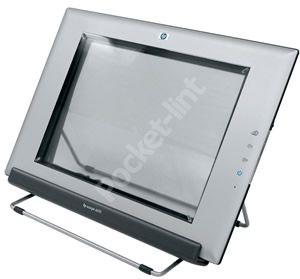Scanners are scanners aren’t they? Not much has changed since the first versions started appearing on our desktop. Resolutions have become overkill for the average user, but apart from that they were beige slabs that take up desk or shelf space and used occasionally to scan in the odd document or image from a magazine. If this is the case, it appears HP cooked up a new recipe in its Californian R & D labs.
Our quick take
At £179 this is an expensive scanner whose quality doesn’t really live up to the price. It’s obviously that you are paying for the style angle rather than scan quality. From that point of view it lives up to its remit - looks great sitting on the desk, however for a lot less you can get a scanner that will produce much better results. Grey plastic won’t beat silver but looks are nothing compared to good performance for the price.

HP scanjet 4670 - 3.5 / 5
| FOR | AGAINST |
|---|---|
|
|
The Scanjet 4670 is its latest scanner in the popular Scanjet series and it’s neither beige nor does it take up much space on your desk.
Styled in a silver case and standing vertically, the 4670 looks more like a photo frame than a scanner. The clear windowed approach means that for once you can actually see what you are scanning and whether or not it’s correctly aligned while the operation buttons are tucked neatly on the side for quick operation of printing, scanning and emailing. For larger items you can remove the scanner from the vertical stand and lay it flat on books, work surfaces, in fact, anything that will stay still enough for the scanner to whiz into action (or you can just hold it in place).
For the more traditional scanner user, the Scanjet 4670 also comes with a Transparent Materials Adapter that attaches to the device for negatives and transparencies.
Optical resolution is up to 2400dpi x 2400 dpi with a maximum scan size of 410 x 300 x 17 mm. Transferring the data to your Mac or PC is performed using USB2.0 cable and setup on both systems was very straightforward. Like most HP scanners, the Scanjet 4670 comes with HP Photo & Imaging software, a no-frills photo and image editing application and integration with programs such as Photoshop and Fireworks was seamless. HP Scanjet software in use however seems cumbersome and difficult to change settings - something which Epson seems to have finely tuned over the years. It took us a couple of help files to work out how to resize a negative that we wanted to scan.
Scans produced good results although we have seen better on machines dedicated to the task in hand rather than trying to be the latest fashion accessory. Unexpectedly the flatbed scanner provided better results with the Transparent Materials Adapter producing images that suffered from Chromolyn abrasion when dealing with whites and contrasting colours. However when it came to using the scanner away from its stand with multiple images and text, the scanner coped very well capturing photos, the print, the line drawings and the grain of the desk underneath.
To recap
A victim of its own success, HP’s multifunction market is showing up the specialist scanners that aren’t top notch or cheap.
